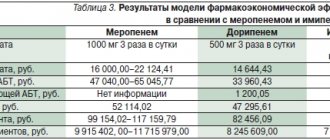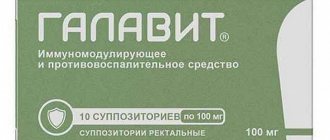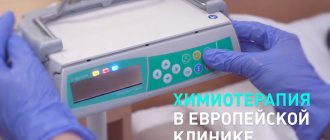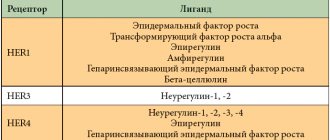Vancomycin, 1 piece, 500 mg, powder for solution for infusion
Vancomycin is a tricyclic glycopeptide antibiotic produced by Amycolatopsis orientalis. The bactericidal effect of vancomycin is manifested in the inhibition of bacterial cell wall biosynthesis and is capable of changing the permeability of the bacterial cell membrane and the synthesis of ribonucleic acid (RNA). Blocks the synthesis of the bacterial cell wall at a site different from that on which penicillins and cephalosporins act (without competing with them for binding sites), strongly binding to O-alanyl-O-alanine residues of peptidoglycan subunits (located on the outer surface of the cytoplasmic membrane) - a major component of the cell wall, which leads to cell lysis.
Shows a bactericidal effect against many gram-positive bacteria and a bacteriostatic effect against Enterococcus spp. Bactericidal effect on Enterococcus spp. achieved by the combined administration of vancomycin and aminoglycosides. There is no cross-resistance between vancomycin and other classes of antibiotics.
Active against gram-positive microorganisms: Staphylococcus aureus, Staphylococcus haemolyticus, Staphylococcus epidermidis (including heterogeneous methicillin-resistant strains), Streptococcus spp. (Streptococcus pyogenes, Streptococcus pneumoniae, Streptococcus agalactiae and others, including penicillin-resistant strains), Enterococcus spp. (including Enterococcus faecalis), Clostridium spp., Propionibacterium acnes, Actinomyces spp., some strains of Lactobacillus spp., Rhodococcus spp., Corynebacterium spp., Listeria monocytogenes, Bacillus spp.
In vitro, some isolated strains of Enterococcus spp. and Staphylococcus spp. may exhibit resistance to vancomycin.
In combination with aminoglycosides, in vitro synergism is observed against many strains of Staphylococcus aureus, group D streptococci that do not belong to enterococci, Enterococcus spp., Streptococcus viridans group. In combination with gentamicin, tobramycin, rifampicin, imipenem, a synergistic effect is observed against Staphylococcus aureus. In some cases, with a combination of vancomycin and rifampicin, antagonism of action is observed against strains of Staphylococcus spp., This combination of drugs also exhibits synergistic action against some strains of Streptococcus spp.
Vancomycin is inactive in vitro against gram-negative microorganisms, mycobacteria and fungi.
The optimum action is at pH 8; when the pH decreases to 6, the effect decreases sharply.
The development of resistance in staphylococci during therapy is very rare. The minimum inhibitory concentration (MIC) value for most antibiotic-sensitive microorganisms is less than 5 μg/ml; the MIC value for vancomycin-resistant Staphylococcus aureus strains reaches 10-20 mg/l.
When used orally, it has a minimal systemic effect and acts locally on sensitive microflora in the gastrointestinal tract (GIT) (Staphylococcus aureus, Clostridium difficile).
Vancomycin
Vancomycin is not intended for intramuscular or bolus injections.
It is used intravenously by infusion or orally.
When administering vancomycin intravenously, the recommended concentration is no more than 5 mg/ml and the rate of administration is no more than 10 mg/min.
For adults and children over 12 years of age with normal renal function, the drug should be administered intravenously at 2000 mg per day (500 mg every 6 hours or 1000 mg every 12 hours). Each dose should be administered at a rate of no more than 10 mg/min and over a period of at least 60 minutes. The maximum single dose is 1000 mg, the maximum daily dose is 2000 mg.
For children from 1 month to 12 years, the drug should be administered intravenously at 10 mg/kg every 6 hours. Each dose should be administered over at least 60 minutes.
For newborns, the initial dose is 15 mg/kg, then 10 mg/kg every 12 hours during the first week of life. Starting from the second week of life - every 8 hours until the age of one month. Each dose should be administered over at least 60 minutes. When prescribing to newborns, monitoring the concentration of vancomycin in the blood plasma is desirable. The maximum single dose for newborns is 15 mg/kg body weight; the daily dose for a child should not be higher than the daily dose for an adult (2000 mg).
For obese patients, the drug is prescribed in normal doses.
Patients with impaired renal function must individually select the dose. Serum creatinine clearance (CK) can be used to guide vancomycin dosing in this group of patients.
Correction can be carried out by increasing the intervals between administrations, or reducing the single dose of the drug.
Vancomycin dose table for patients with impaired renal function
| Creatinine clearance (ml/min) | Vancomycin dose mg/24 h |
| 100 | 1545 |
| 90 | 1390 |
| 80 | 1235 |
| 70 | 1080 |
| 60 | 925 |
| 50 | 770 |
| 40 | 620 |
| 30 | 465 |
| 20 | 310 |
| 10 | 155 |
This table cannot be used to determine the dose of the drug for anuria. Such patients should be given an initial dose of 15 mg/kg body weight to rapidly achieve therapeutic serum concentrations of the drug. The dose required to maintain a stable concentration of the drug is 1.9 mg/kg/24 hours. For anuria, it is recommended to administer 1000 mg every 7-10 days.
Correction by increasing the intervals between injections
| Creatinine clearance (CC) (ml/min) | Vancomycin dose | Interval between doses |
| >80 | 500 mg or 1000 mg | 12 h |
| 80-50 | 1000 mg | 24 hours |
| 50-10 | 1000 mg | 3-7 days |
| <10 (anuria) | 1000 mg | 7-14 days |
In premature infants and elderly patients, a significant dose reduction may be required as a result of reduced renal function. Vancomycin plasma concentrations should be regularly monitored.
For patients with severe renal failure, it is advisable to administer maintenance doses of 250-1000 mg once every few days: for creatinine clearance 10-50 ml/min - 1000 mg every 3-7 days, for creatinine clearance <10 ml/min - 1000 mg every 7 days. 14 days. For anuria, a dose of 1000 mg every 7-10 days is recommended.
When only the serum creatinine concentration (CK) is known, the formula below can be used to calculate creatinine clearance:
For men: body weight, kg x (140 - age (years) / [72 x CK in blood serum, mg/100 ml]
For women: the result obtained is multiplied by 0.85.
Hemodialysis patients: the initial dose (when using a high-flux membrane) is 20-25 mcg/kg. Maintenance doses should be administered based on the residual drug concentration in the blood plasma (the dose is adjusted to maintain a residual drug concentration of approximately 15-20 mcg/ml). Vancomycin is effectively removed by hemodialysis using high-flux membranes (such as polysulfone). When using membranes with normal permeability (low-flux membranes), vancomycin is poorly excreted.
Patients with liver failure do not require dose adjustment.
Perioperative prophylaxis of bacterial endocarditis in all age groups: the recommended dose is an initial dose of 15 mg/kg before anesthesia. Depending on the length of the surgery, a second dose of vancomycin may be required.
Duration of therapy: The duration of treatment depends on the type and severity of infection and individual clinical response. The recommended duration of therapy is presented in the table below:
| Indication | Duration of therapy |
| Complicated skin and soft tissue infections | |
| - without necrosis | From 7 to 14 days |
| - necrotizing | 4 to 6 weeks* |
| Bone and joint infections | From 4 to 6 weeks** |
| Community-acquired pneumonia | From 7 to 14 days |
| Nosocomial pneumonia, including ventilator-associated pneumonia | From 7 to 14 days |
| Infective endocarditis | From 4 to 6 weeks*** |
* Continue administration until the need for wound debridement has passed, until the patient's condition has clinically improved and there has been no fever for 48-72 hours.
**Longer courses of treatment with an oral drug should be considered for the treatment of prosthetic joint infections.
*** The duration and need for combination therapy depends on the type of valve and microorganism.
Preparation of solution for infusion
The solution is prepared by adding 10 ml of water for injection to 500 mg and 20 ml to 1000 mg to obtain a concentration of 50 mg/ml. Before use, the drug solution is diluted in at least 100 ml (solutions containing 500 mg of vancomycin) or 200 ml (solutions containing 1000 mg of vancomycin) of 5% dextrose solution or 0.9% sodium chloride solution. Before injection, the prepared solution for parenteral administration should be checked visually for the presence of mechanical impurities and color changes.
The concentration of vancomycin in the prepared solutions should not exceed 5 mg/ml.
Stability of solutions
Solutions prepared on the basis of a 5% dextrose (glucose) solution or a 0.9% sodium chloride solution can be stored at room temperature (not higher than 25 ° C) for 24 hours, or in the refrigerator at a temperature of 2 to 8 ° C in within 14 days.
From a microbiological point of view, drug solutions should be used immediately after preparation, except in cases where the preparation was carried out under controlled aseptic conditions. If the drug solutions are not used immediately after preparation, the conditions and duration of their storage are the responsibility of the user and should not exceed the periods indicated above.
Preparation of a solution for oral administration
Vancomycin can be used orally to treat pseudomembranous colitis caused by Clostridium difficile due to antibiotic use, as well as to treat staphylococcal enterocolitis. Intravenous administration of the drug has no advantages for the treatment of these diseases.
The drug should be used in the following doses: adults 500-2000 mg 3-4 times a day, children 40 mg/kg 3-4 times a day. The total daily dose should not exceed 2000 mg. The appropriate dose is prepared in 30 ml of water and given to the patient to drink or administered through a tube. To improve the taste of the solution, you can add regular food syrups to it. Duration of treatment is from 7 to 10 days.
Vancomycin is not effective when taken by mouth for other types of infections.
Vancomycin lyophilisate d/ra d/inf fl 1g
Compound
Vancomycin hydrochloride in terms of vancomycin - 0.5 g, 1.0 g.
Pharmacokinetics
After intravenous administration, the volume of distribution is 0.39-0.92 l/kg. The maximum concentration in blood plasma (Cmax) after intravenous administration of 0.5 g of vancomycin is 49 µg/ml after 30 minutes and 20 µg/kg after 1-2 hours, after administration of 1 g - 63 µg/ml after 60 minutes and 23- 30 mcg/ml after 1-2 hours. Bonding with plasma proteins is 55%.
Reaches therapeutic concentrations in tissues and body fluids: in ascitic, synovial, pleural and pericardial fluids, in peritoneal dialysate fluid, in urine, atrial appendage tissue. Does not penetrate the blood-brain barrier (in case of meningitis, it is found in the cerebrospinal fluid in therapeutic concentrations). Penetrates through the placental barrier. Excreted in breast milk.
Practically not metabolized. Half-life with normal renal function: adults - about 6 hours (4-11 hours), newborns - 6-10 hours, infants - 4 hours, older children - 2-3 hours. With chronic renal failure (oliguria or anuria ) the half-life increases to 6-10 days.
With repeated administration, cumulation is possible.
75-90% of the drug is excreted by the kidneys by passive filtration in the first 24 hours; in patients with a removed or absent kidney, it is excreted slowly and the mechanism of elimination is unknown. In small to moderate quantities it can be excreted in bile. It is excreted in small quantities during hemodialysis or peritoneal dialysis.
Indications for use
Sepsis, endocarditis, pneumonia, lung abscess, bone and joint infections (including osteomyelitis), meningitis, skin and soft tissue infections.
For oral administration: pseudomembranous colitis caused by Clostridium difficile
, enterocolitis caused by
Staphylococcus aureus
.
Contraindications
Symptoms:
increased severity of side effects.
Treatment:
symptomatic, in combination with hemoperfusion and hemofiltration.
Directions for use and doses
It is administered only intravenously (intramuscular injections are painful) at a rate of no more than 10 mg/min, the duration of the infusion should be at least 60 minutes.
For adults
- 0.5 g or 7.5 mg/kg every 6 hours or 1 g or 15 mg/kg every 12 hours.
For newborn children
up to 7 days of life - 15 mg/kg, then 10 mg/kg every 12 hours.
Children up to 1 month
: Apply the same dose every 8 hours.
Children over 1 month
- 10 mg/kg every 6 hours or 20 mg/kg every 12 hours.
In patients with impaired renal excretory function
initial dose - 15 mg/kg, then the dosage regimen is adjusted taking into account the values of creatinine clearance (CC): with creatinine clearance more than 80 ml/min - the usual dose, creatinine clearance 50-80 ml/min - 1 g every 1-3 days, 10- 50 ml/min - 1 g every 3-7 days, less than 10 ml/min -1 g every 7-14 days.
Preparation of vancomycin solution
: powder is dissolved in water for injection: 0.5 g - in 10 ml, 1 g - in 20 ml (solution concentration is 50 mg/ml). The resulting solution is diluted with 0.9% sodium chloride solution or 5% dextrose solution, or Ringer's solution: for 0.5 g - 100 ml and for 1 g - 200 ml.
Solutions prepared on the basis of 0.9% sodium chloride or 5% dextrose can be stored in a refrigerator (2-8) C for 14 days without significant loss of activity. Solutions prepared with Ringer's solution can be stored in the refrigerator for 4 days (96 hours).
For pseudomembranous colitis and enterocolitis
- orally, in the form of a solution in 30 ml of water: adults - 0.5-2 g divided into 3-4 doses, children - 0.04 g/kg divided into 3-4 doses, no more than 2 g per day. Duration of treatment is 7-10 days.
Storage conditions
In a place protected from light, at a temperature not exceeding 25 C.
Keep out of the reach of children.
After the expiration date of the drug,
open the unused bottles a large amount of water and pour them down the drain.
Best before date
2 years.
Do not use after the expiration date.
special instructions
When prescribing to newborns (especially premature infants), monitoring the concentration of the drug in the blood serum is desirable.
During the treatment period, an audiogram and monitoring of kidney function (urinalysis, creatinine and urea nitrogen levels) are necessary.
Monitoring the concentration of vancomycin in the blood serum is desirable in patients with renal failure, as well as in patients over 60 years of age. The maximum concentration should not exceed 40 mcg/ml, and the minimum concentration should not exceed 10 mcg/ml. Concentrations above 80 mcg/ml are considered toxic.
Description
The powder is white to white with a pinkish or light brown tint.
Conditions for dispensing from pharmacies
On prescription
Dosage form
powder for solution for infusion
Manufacturer and organization accepting consumer complaints
KRASFARMA, JSC
Pharmacodynamics
Antibacterial agent produced by Amycolatopsis orientalis
, has a bactericidal effect on most microorganisms (bacteriostatic on enterococci).
Blocks the synthesis of the bacterial cell wall in a site different from that affected by penicillins and cephalosporins (does not compete with them for binding sites), strongly binding to the D-alanyl-D-alanine part of the cell wall precursor, which leads to cell lysis. It is also capable of changing the permeability of bacterial cell membranes and selectively inhibiting RNA synthesis. Active against gram-positive microorganisms: Staphylococcus spp.
( including penicillinase-forming and methicillin-resistant strains),
Streptococcus spp., Streptococcus pneumoniae
(including penicillin-resistant strains),
Corynebacterium spp., Enterococcus spp., Clostridium spp., Actinomyces spp
.
It is most active at pH 8; when pH decreases to 6, the effect decreases sharply. Actively affects only microorganisms that are in the stage of reproduction.
Almost all gram-negative bacteria, Mycobacterium spp
., mushrooms, viruses, protozoa. Does not have cross-resistance with other antibiotics.
Side effects
Post-infusion reactions
(due to rapid administration): anaphylactoid reactions - (decrease in blood pressure, bronchospasm, dyspnea, skin rash, itching), red man syndrome associated with the release of histamine (chills, fever, rapid heartbeat, hyperemia of the upper half of the body and face, spasm of the pectoral muscles cages and backs).
From the urinary system:
nephrotoxicity (up to the development of renal failure), more often when combined with aminoglycosides or prescribed for more than 3 weeks in high doses, manifested by an increase in the concentration of creatinine and urea nitrogen. Rarely - interstitial nephritis.
From the digestive organs:
nausea, pseudomembranous colitis.
From the senses
: ototoxicity - hearing loss, vertigo, ringing in the ears.
From the hematopoietic organs:
reversible neutropenia, transient thrombocytopenia, rarely - agranulocytosis.
Local reactions (if infusion rules are violated)
: phlebitis, pain at the injection site, tissue necrosis at the injection site.
Allergic reactions:
fever, nausea, chills, eosinophilia, rash (including exfoliative dermatitis), erythema malignant exudative (Stevens-Johnson syndrome), toxic epidermal necrolysis (Lyell's syndrome), vasculitis.
Use during pregnancy and breastfeeding
Use during pregnancy (II and III trimester) is possible only for health reasons.
Stop breastfeeding.
Interaction
When prescribed simultaneously with local anesthetics, erythematous rashes and hyperemia of the facial skin may appear in children, and intracardiac conduction disturbances in adults.
Co-administration with nephrotoxic and ototoxic drugs (aminoglycosides, amphotericin B, acetylsalicylic acid or other salicylates, bacitracin, bumetanide, capreomycin, carmustine, paromomycin, cyclosporine, loop diuretics, polymyxin B, cisplatin, ethacrynic acid) is not recommended.
Cholestyramine reduces the effectiveness of vancomycin.
Antihistamines, meclozine, phenothiazines, thioxanthenes can mask the symptoms of vancomycin ototoxicity (tinnitus, vertigo).
When used simultaneously with general anesthetics and vecuronium bromide, the frequency of side effects increases (risk of decreased blood pressure, development of neuromuscular blockade), so vancomycin infusion is possible at least 60 minutes before their administration.
Overdose
Symptoms:
increased severity of side effects.
Treatment: symptomatic, in combination with hemoperfusion and hemofiltration.




